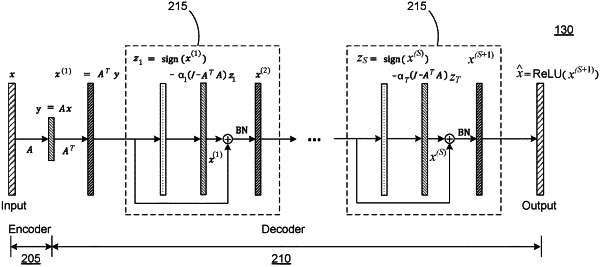| CPC G06N 3/084 (2013.01) [G06F 17/16 (2013.01); G06N 3/02 (2013.01); G06N 3/045 (2023.01)] | 20 Claims |

|
1. A computer-implemented method comprising:
receiving, using at least one processor of a computing device, a dataset of sparse vectors from a requesting process, the sparse vectors have a dimension of d;
initializing an encoding matrix stored in a memory of the computing device;
selecting a subset of sparse vectors from the dataset;
modifying, using the at least one processor, the encoding matrix via machine learning to minimize reconstruction error for the subset of sparse vectors by:
generating an encoded vector of dimension k for each vector in the subset using the encoding matrix, where k<d,
decoding each of the encoded vectors using S projected subgradient steps, where S is a predetermined number that is lower than a number of steps used for convergence, and
using back propagation to adjust the encoding matrix;
generating an encoded dataset by encoding each vector in the dataset of sparse vectors using the encoding matrix; and
providing the encoded dataset to the requesting process.
|